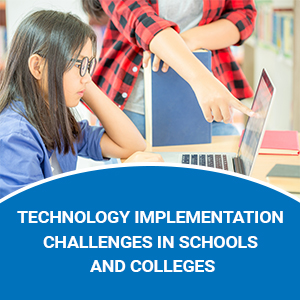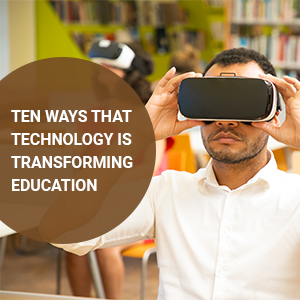Announcement
Get Ready for INDUS CUP 2K26! | Dates: 5–10 January 2026 | Stand a Chance to Win Cash Prizes up to ₹10,00,000!...Read more Get Ready for INDUS CUP 2K26! | Dates: 5–10 January 2026 | Stand a Chance to Win Cash Prizes up to ₹10,00,000!
We are excited to announce the Indus Hackathon 2025, an exhilarating one-day event organized by the CSE Department of Indus University....Read more We are excited to announce the Indus Hackathon 2025, an exhilarating one-day event organized by the CSE Department of Indus University.
26th ISTE Faculty Annual State Convention will be held at Indus University on April 27, 2023....Read more 26th ISTE Faculty Annual State Convention will be held at Indus University on April 27, 2023.
Get Ready for INDUS CUP 2K26! | Dates: 5–10 January 2026 | Stand a Chance to Win Cash Prizes up to ₹10,00,000!...Read more Get Ready for INDUS CUP 2K26! | Dates: 5–10 January 2026 | Stand a Chance to Win Cash Prizes up to ₹10,00,000!
We are excited to announce the Indus Hackathon 2025, an exhilarating one-day event organized by the CSE Department of Indus University....Read more We are excited to announce the Indus Hackathon 2025, an exhilarating one-day event organized by the CSE Department of Indus University.
26th ISTE Faculty Annual State Convention will be held at Indus University on April 27, 2023....Read more 26th ISTE Faculty Annual State Convention will be held at Indus University on April 27, 2023.

We won't be surprised by this as we live in the 21st century and witness technology's influence in practically every aspect of daily life. This fact is almost certainly accepted in education as well. We have witnessed how technology has evolved and changed the educational landscape during the past two decades. With the development of technology, we have witnessed schooling being completed online, computer-based remote exams being administered, and taking classes at foreign universities while residing in other nations. Technology is used in educational institutions for teaching, learning, and administrative purposes. The education ecosystem increasingly relies on cutting-edge technology for effective teaching and learning environments. Teachers are mastering new technology to assist students in achieving better learning outcomes.
Everyone who wants to learn now has access to education thanks to the technologically enhanced classrooms through the internet, at any time, in any subject, and from anywhere. The capacity of the classroom is unbounded. Unlike physical classrooms, which have a maximum capacity of sixty students, virtual classrooms allow access by any number of students. An infinite quantity of knowledge is available for learning, either for free or at a price that is within reach of the average person.
Education was mainly about reading books and paying attention to teachers, which was uninteresting for many students and exhausting for teachers. Some educational institutions attempted to implement activity-based learning, which encouraged the students and raised their level of interest to some extent. Still, the outcome was not what was anticipated.
Learning has become more interactive and collaborative due to the use of contemporary technology in education, such as augmented reality, virtual reality, and artificial intelligence. According to a 2017 article by Schindler et al., technological application in education encourages students to engage in higher-order thinking, foster conversation and discussion, and consider the lesson's main points. Additionally, it raises digital proficiency. Another study found that using technology in the classroom has increased students' motivation to comprehend and complete the activities (Mistler-Jackson & Songer, 2000).
Technology undoubtedly increased enthusiasm for learning by a factor of ten, and it helped students develop the analytical and critical thinking abilities crucial for overcoming any difficulty. The students have benefited from it in their success and academic achievement. This applies to higher education and professional studies as well as to schools.
Many think using technology in school would make students less socially adept and more dependent on computers. We can see that iGen kids spend more time on their phones and other technology. Even a baby under a year old calms down and gets more drawn to the phone's screen. Artificially intelligent devices play a significant role right now, but research is still being done to determine how they will influence the brain.
Before kids reach adolescence, they are already capable of learning, analysing, and creating software. This demonstrates how the brain gradually changes from its current state to a higher stage of machine language comprehension. Additionally, there are numerous social groups on the internet for every subject where students can communicate with others who share their viewpoints. It is not entirely accurate to proclaim that society is getting less socially adept because group conversations and blogs that share knowledge are growing just as the platform for the communication medium has changed.


Accessibility: Every educational endeavour places the most significant emphasis on accessibility for quick and efficient learning. You may now quickly and easily obtain knowledge without being limited to books. With the aid of technology, all the resources essential for education will be easily accessible.
Communication and Collaboration: Unlike in the past, technology has made it possible for students and teachers to communicate and work together. They can exchange information and talk about any subject through chats, emails, texts, and video conferences. They can cooperate and work together to enhance their educational experiences.
Online resources: We are all aware that there are free online resources available in the form of text, pictures, videos, etc. There is a wealth of knowledge in educational blogs, articles, and programmes that can enhance your learning process. You can use the resources to strengthen your concepts, problem-solving abilities, practice, and research for better learning outcomes.
Personalised learning: To ensure that each student learns effectively, it is crucial to devote attention to each student. For example, some kids might comprehend the concepts more virtually than others. Every student has a unique learning style. Today's technology is transforming the educational system by giving students access to personalised learning.
Flexibility: Flexibility is essential for excellent productivity in every educational institution. It gives students a platform to study at their own speed and communicate with educators anytime. Additionally, there are opportunities to connect with other professionals globally to learn new things and advance one's abilities.
Assessment: Particularly for teachers, technology has offered enormous benefits for lesson planning and performance-based student evaluations. Teachers can evaluate their students in various ways, including by giving them homework, online projects, tests, and educational games. Teachers can assess areas for improvement regarding their academic skills and learning deficits.
Fun learning: As you probably already know, kids are more motivated to learn when enjoyment is involved. Technology integration into the educational system is now more enjoyable than ever. Teachers can engage their students in meaningful activities for extended periods using a variety of platforms and technologies. These devices have various applications that can be utilised for learning.
Eases classroom preparation: The pattern for delivering lectures is also made simple for teachers to save time on preparation and other paperwork. Instead of creating notes for the students, teachers might create presentations they share with the class. Different teaching strategies are being developed by teachers that go beyond lectures.
Reduces paperwork: Technology is frequently used in the educational system for administrative tasks. Nowadays, every educational institution has computers with software and programs connected to high-speed internet. It aids them in lessening paperwork so they can concentrate on boosting academic production. There is no need for physical labour because the entire process can be completed automatically.
Online tools: There are many online resources accessible for teaching and learning in the age of modern technology. Growing technological advancements have changed how knowledge can be accessed for efficient learning. The internet platform offers a wealth of information. Various tools are used in educational institutions to aid in adequate understanding and teaching for students and teachers.
Teachers' and students' roles are starting to change due to technology. Since a very long time ago, and to this day, the model of the teacher as the "sage on the stage" has persisted in education. In many classrooms today, however, we observe the teacher's role shifting to a "guide on the side" as learners take more accountability for their learning and use technology to gather pertinent information. This is due to the access to information and educational opportunities that technology has made possible. In order to support this new style of education, encourage more excellent contact and small group work, and use technology as an enabler, schools and colleges across the nation are starting to rethink learning environments.
Making the most of the prospects offered by technology to improve education so that productive and effective learning is accessible to everyone worldwide will be up to classroom teachers and educational technologies.